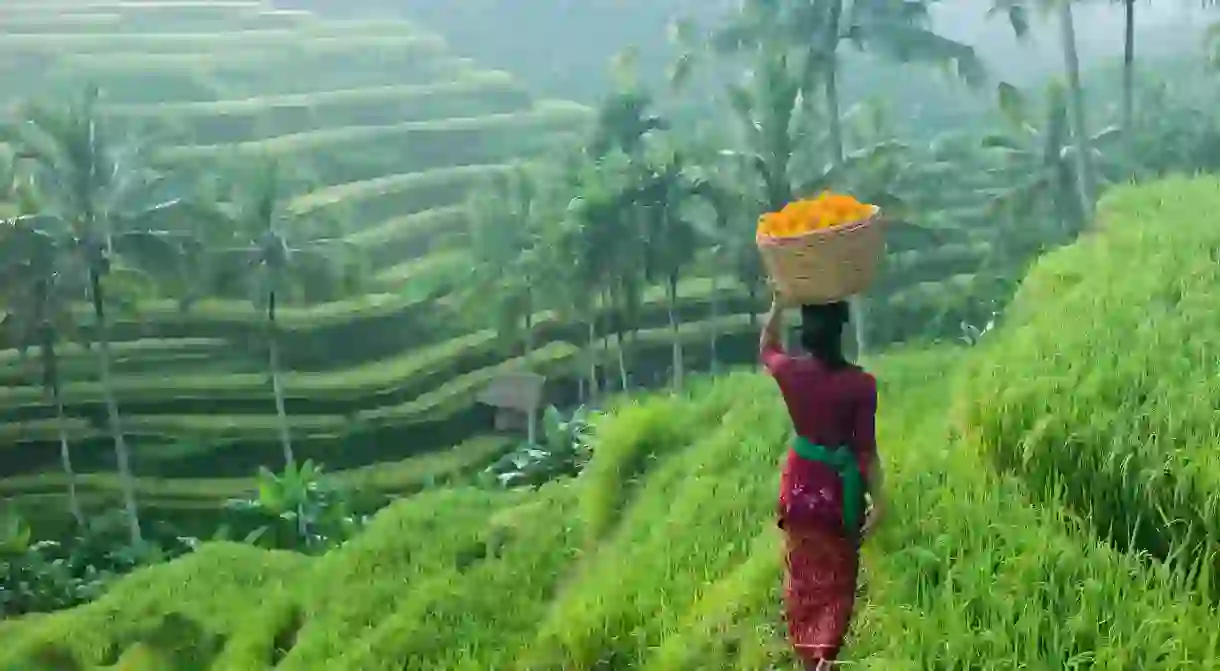The Best Bali Rice Fields to Visit

Emerald rice terraces characterise the hillsides of Bali — from Tegalalang to Jatiluwih. Grab your camera and visit these rice paddies on your next trip.
Indonesia is one of the world’s leading rice producers, so it’s no surprise that these glistening landscapes can be found all over Bali. Not only are they a verdant delight to the senses, they offer a real look into Balinese culture. The lush, stepped terraces are the product of an irrigation technique known as subak, which dates to the 9th century. The start of the dry season (from April onward) is the best time to visit the rice fields, but they’re downright captivating 365 days of the year. Discover our favourites below.
For an incomparable experience of Bali, encompassing natural wonders, surfing, sunsets and temples, book yourself onto our specially curated 12-day trip.
Tegalalang Rice Terrace
Natural Feature

Munduk Rice Terrace
Natural Feature

Way up in the mountainous region of Munduk, you’ll find its eponymous rice fields. The altitude — just over 1,000 metres above sea level — means they are often blanketed with low-hanging clouds. Temperatures are typically much cooler than elsewhere, so dress accordingly and stop into a local warung for some piping hot bakso — a popular Indonesian meatball soup. On the way back, stop by the twin lakes of Tamblingan and Buyan.
Jatiluwih Rice Terrace
Natural Feature

The Jatiluwih Rice Terrace is the largest of its kind in Bali, spanning over 1480 acres (600ha). Take a narrow, winding road — just over an hour’s drive north from Denpasar — to find this wonderland of undulating rice fields. Local restaurants are dotted around the surrounding area, many of which overlook the soft rolling hills and Mount Batukaru. Stick around for a day, or even stay the night — there are plenty of nearby guesthouses and hotels.
Canggu Rice Fields
Natural Feature

The rice fields of Canggu intertwine with local life, emigrant communities and motorbikes buzzing in all directions. They’re not as quiet as others on this list, but offer a unique look into Balinese farming traditions. Walk down a paved path, just off the intersection of Jalan Raya Canggu and Jalan Raya Babakan, and take a stroll away from the streets’ noise. On a clear day, you’ll even see the volcanoes in the distance.
Pacung Rice Terrace
Natural Feature

This wide-stepped rice terrace is among the most visited in Bali. The Pacung Rice Terrace (pronounced pa-chung) is located in the village of Baturiti, about an hour’s drive north of Denpasar. It’s a great stop-off en route to the twin lakes or nearby Leke Leke Waterfall. Take a seat at Warung Gemitir afterwards for a coffee with a view of Mount Batukaru.
Payangan Rice Terrace
Natural Feature

Immediately north of Ubud lies Payangan, a district that takes you further from the nearby tourist buzz, allowing for a more local experience. Here, you’ll find the Ayung River flowing through pockets of rice fields, shrouded by jungle. The surrounding villages of Penestanan and Pengosekan both have their own rice fields, so spend the day and take time to explore.
Sidemen Rice Terrace
Natural Feature

Backed by iconic views of Mount Agung, the Sidemen Rice Terrace is a true representation of Bali’s divine landscapes. Be sure to visit nearby Pura Besakih, a massive temple complex referred to as Bali’s mother temple. With rice fields surrounding it in all directions, the setting is utterly magical. Reach Sidemen in 90 minutes by car from Canggu and Seminyak, along plenty of winding roads through small villages.
Belimbing Rice Terrace
Natural Feature

Belimbing Rice Terrace is relatively off the beaten path in Tabanan, just northwest of Canggu and Seminyak. Bring your camera — the towering volcano backdrop and palm trees lining the scene make for a top photo opportunity. It’s far less touristy than other rice fields on the island, but while you’re here, you can check out some of the beaches, including Pasut and Pig Stone.













